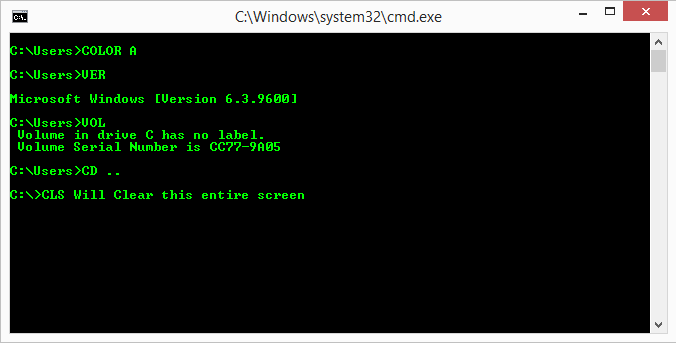Convert .Sh To .Bat
1. Overview of .sh and .bat file formats
.sh files:
A .sh file, also known as a shell script, is a plain text file containing a series of commands that are interpreted and executed by a Unix-like shell. These scripts play a crucial role in automating tasks, managing processes, and executing commands on Unix-based systems.
.bat files:
On the other hand, .bat files, also known as batch files, are scripts written for the Windows Command Prompt or MS-DOS. They also contain a series of commands, but in this case, they are executed by the Windows command interpreter. Batch files are commonly used to automate tasks and execute multiple commands in sequence.
Key differences between the two formats:
While .sh and .bat files serve similar purposes of automating tasks, there are significant differences between them due to the different operating systems they are intended for. The key differences include:
– Syntax: .sh scripts are written using Unix shell command syntax, while .bat scripts use Windows command syntax.
– Command availability: Certain commands and functions available in shell scripts may not exist or have different equivalents in batch files.
– File format: .sh files are typically saved in plain text format, while .bat files usually have the .bat extension and are associated with the Windows Command Prompt.
2. Reasons for converting .sh to .bat
Although shell scripts are designed for Unix-based systems, there are several reasons why one might need to convert .sh files to .bat files for Windows:
– Compatibility with Windows operating system: Windows users who have scripts or software primarily developed for Unix-based systems may need to convert them to run on their Windows machines.
– Need to run the script on Windows machines: If a script is essential for a specific task or process and Windows is the target system, converting the .sh script to .bat allows it to be executed by the Windows Command Prompt.
– Availability of Windows-specific commands and software: Converting to .bat enables usage of Windows-specific commands and software, expanding the functionality and capabilities of the script on Windows-based systems.
3. Manual conversion: Step-by-step process
If you find yourself needing to convert a .sh script to a .bat file, here is a step-by-step process to guide you through the manual conversion:
1. Understanding the shell script code: Familiarize yourself with the existing shell script code to gain a clear understanding of its functionality and purpose.
2. Identifying platform-dependent commands and functions: Identify any Unix-specific commands or functions that need to be replaced with their Windows equivalents.
3. Rewriting code using equivalent batch commands and syntax: Replace the Unix commands and functions with their Windows counterparts, ensuring the syntax is correct for batch files.
4. Handling path and file format differences: Adapt any file paths and formats to match the Windows environment, accounting for differences in directory structures and file naming conventions.
5. Testing and debugging the converted batch file: Thoroughly test the converted .bat script to ensure it performs as expected and make any necessary adjustments or corrections.
4. Automating the conversion process
While manual conversion can be effective, it can also be time-consuming. To streamline the process of converting .sh files to .bat files, consider using conversion tools and software specifically designed for this purpose. Some popular tools include ShConverter, Cygwin, and MinGW.
When choosing a conversion tool, consider your specific requirements, such as compatibility with the target Windows version, ease of use, and support for complex shell scripts. Install and configure the chosen tool according to its documentation, ensuring that it is ready to convert your .sh scripts.
Conversion tools typically offer command-line options for batch conversion, allowing you to convert multiple .sh files at once. Familiarize yourself with these options to maximize efficiency and accuracy during the conversion process. Additionally, it is important to follow best practices, such as backing up your original .sh files and testing the converted scripts in a controlled environment.
5. Challenges and considerations
Converting .sh to .bat scripts may present challenges and considerations due to the inherent differences between Unix-like systems and Windows. Some common challenges include:
– Language and encoding differences: Ensure that character encoding and language settings are correctly interpreted during the conversion process to prevent any unintended issues.
– File and directory path variations: Be aware of the differences in how file and directory paths are represented in Unix and Windows. Adapt the paths accordingly to ensure the converted script operates correctly.
– Command syntax discrepancies: Pay attention to differences in command syntax between Unix and Windows. Adjust the syntax of your commands to ensure they are valid in the Windows Command Prompt.
– Adapting shell-specific functionalities to batch equivalents: Some shell-specific functionalities may not have direct equivalents in batch files. Find alternative solutions or workarounds to accomplish the same task in the Windows environment.
– Debugging and troubleshooting common conversion errors: During the conversion process, be prepared to encounter errors and discrepancies. Debugging and troubleshooting tools and techniques can help identify and resolve any issues.
6. Tips for successful .sh to .bat conversion
To increase your chances of a successful conversion, consider the following tips:
– Have a good understanding of both shell script and batch file concepts: Familiarize yourself with the syntax and functionality of both the Unix shell and Windows batch scripting.
– Regularly test and debug the converted batch files: Thoroughly test the converted batch files to ensure they behave as expected. Debug any issues that arise during the testing process.
– Leverage online communities and forums for assistance: Seek help from online communities and forums where experienced developers can provide guidance and solutions to any problems you encounter during the conversion process.
– Use version control systems to track changes and modifications: Employing a version control system, such as Git, can help you track changes made during the conversion process. This facilitates easy rollback to previous versions if needed.
– Document the conversion process for future reference: Keep a record of the steps taken and any changes made during the conversion. This documentation will serve as a valuable reference for future conversions and troubleshooting.
7. Additional resources and references
Here are some additional resources and references to assist you in converting .sh to .bat:
– Online conversion tools and software: ShConverter, Cygwin, MinGW
– Reference guides and tutorials on shell script to batch conversion
– Tips and tricks from experienced developers through online communities and forums
– Recommended books and courses for further learning and mastery of shell script to batch conversion
Shell Files (\\*.Sh) To Batch File (\\*.Bat) Converter?
Keywords searched by users: convert .sh to .bat
Categories: Top 20 Convert .Sh To .Bat
See more here: nhanvietluanvan.com
Images related to the topic convert .sh to .bat

Found 25 images related to convert .sh to .bat theme









Article link: convert .sh to .bat.
Learn more about the topic convert .sh to .bat.
- How can I convert this .sh script to a windows executable (.bat)?
- Bash to Bat Converter
- Can you convert a .sh file to a .bat file? – Stack Overflow
- Converter for bash shell scripts to windows batch files. – GitHub
- Online BAT to SH Conversion – Conholdate Apps
- Online converter bat ⇔ sh – sendeyo
- How to convert windows batch file to Linux shell script – Quora
- Converting a windows batch file to linux bash
- Convert shell script to batch file – ImageMagick